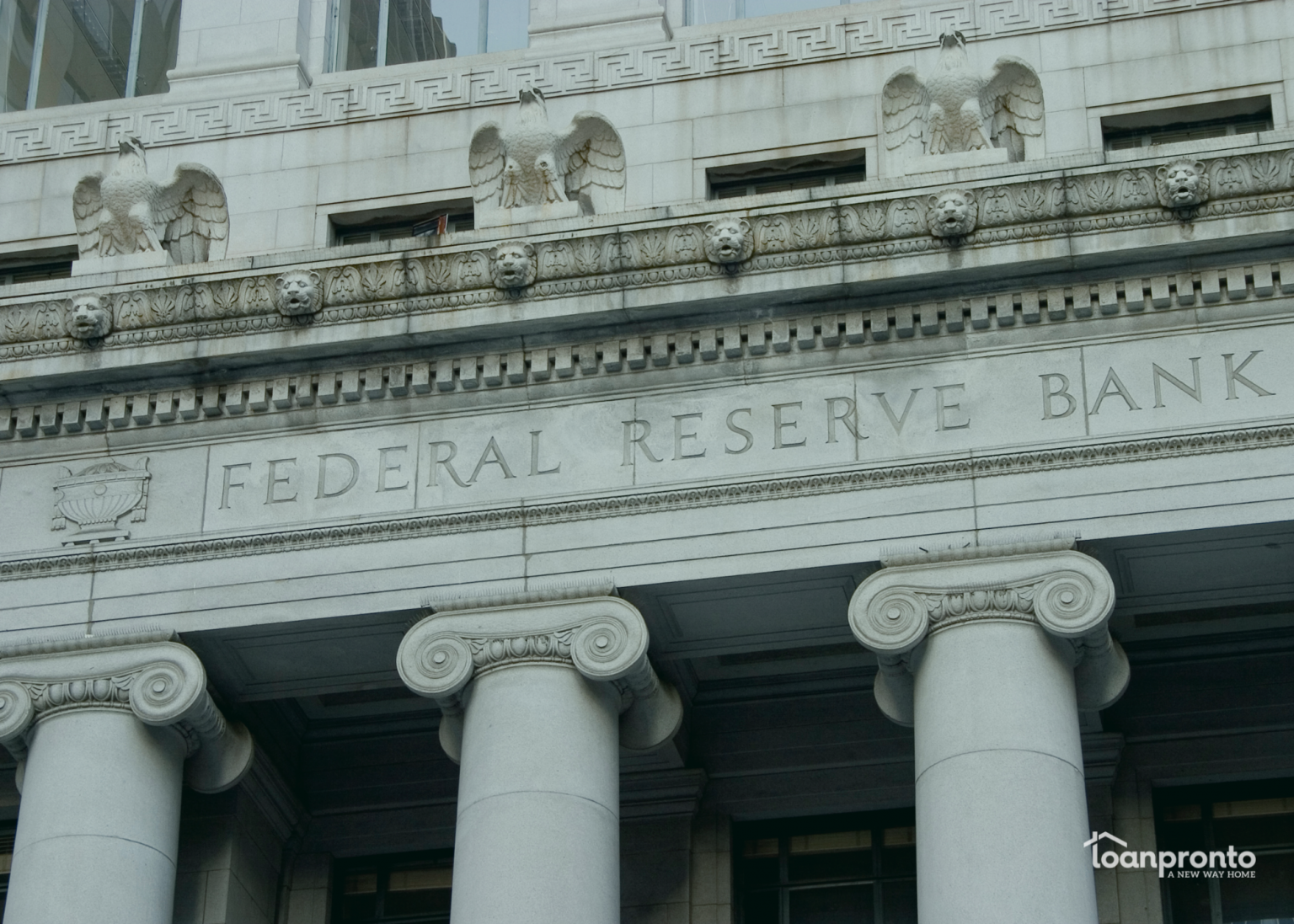Key Takeaways
-
The Federal Reserve influences mortgage rates indirectly through Treasury yields and economic signals.
-
Fixed-rate mortgages generally follow the 10-year Treasury, not the Fed’s benchmark rate.
-
Adjustable-rate mortgages are more directly impacted by Fed policy decisions.
-
Monitoring Fed decisions helps borrowers time the market and lock in more favorable mortgage terms.
If you’re keeping a close eye on mortgage trends, understanding how the Federal Reserve affects mortgage rates in 2025 is essential—whether you’re planning to buy a home or refinance your current mortgage. While the Fed doesn’t set mortgage rates directly, its policy decisions significantly influence rate movement, especially in today’s uncertain economic climate.
How the Fed Influences Mortgage Rates
Although the Federal Reserve doesn’t set mortgage rates, its policies shape the financial environment in which rates move. Two key mechanisms explain this influence:
| Loan Type | Connection to the Fed |
| Fixed-Rate Mortgages | Typically follow the 10-year Treasury yield, which responds to Fed policy and market trends. |
| Adjustable-Rate Mortgages | Often tied to indexes like SOFR, which move more directly with Fed rate decisions. |
As the Fed adjusts its monetary policy, these indexes shift. That ripple effect influences the cost of borrowing for homeowners and homebuyers.
Why Mortgage Rates Don’t Always Mirror the Fed
Mortgage rates react to more than just Fed policy. Broader market dynamics also play a significant role:
- Inflation Pressure: Higher inflation tends to push rates higher.
- Investor Demand: When demand for mortgage-backed securities drops, lenders raise rates to attract buyers.
- Lending Volume: Lenders adjust pricing based on how much loan activity they’re managing.
For example, despite the Fed’s rate cuts in late 2024, rates stayed elevated. Market volatility and inflation concerns widened the spread between Treasury yields and mortgage rates, creating upward pressure.
Fed Rate Decisions vs. Interest Rate Trends (2023–2025)
| Date | Fed Funds Rate Decision | Reason for Fed Action | Avg. 30-Year Fixed Mortgage Rate | Mortgage Rate Trend |
| July 2023 | +0.25% hike | Combat persistent inflation | 6.81% | Increased |
| September 2023 | Held steady | Inflation cooling slightly | 7.19% | Slight uptick |
| November 2023 | Held steady | Monitoring economic slowdown | 7.76% | Flat |
| December 2023 | -0.25% cut | Signs of disinflation and weaker labor data | 7.22% | Declined slightly |
| February 2024 | -0.25% cut | Continued disinflation, global instability | 6.75% | Decreased |
| March 2024 | -0.25% cut | Economic soft landing expectations | 6.60% | Decreased |
| May 2024 | Held steady | Waiting for further inflation progress | 6.78% | Increased slightly |
| July 2024 | Held steady | Energy price rebound, mixed inflation data | 7.01% | Increased |
| September 2024 | Held steady | Sticky inflation, cautious policy stance | 7.25% | Increased |
| December 2024 | -0.25% cut | Inflation falling faster than expected | 6.80% | Decreased |
| March 2025 | Held steady | Watching labor market and inflation trends | 6.85% | Flat |
| May 2025 | Held steady | Data-dependent policy, cautious outlook | 6.72% | Slight decrease |
What This Table Shows:
- Mortgage rates tend to follow economic sentiment, not just Fed policy.
- Fed cuts do not guarantee falling mortgage rates—especially during periods of market uncertainty.
- Inflation and investor demand for mortgage-backed securities play major roles in how rates shift after Fed decisions.
What to Expect in the Coming Months
The Fed’s next policy meeting is scheduled for June 17–18, 2025. Until then, rates will likely respond to new economic indicators, including:
- Monthly inflation reports
- Unemployment and job creation numbers
- Changes in global monetary policy
Any surprises in this data could push rates up or down, even before the Fed makes its next move.
Tips for Locking In a Low Mortgage Rate
Even though the Federal reserve affects rates, homeowners and buyers can still take steps to improve their mortgage offers. Focus on the factors you can control:
- Keep your credit score high by paying bills on time and reducing debt.
- Lower your debt-to-income ratio to appear more financially stable to lenders.
- Make a larger down payment to qualify for better terms.
- Compare offers from several lenders.
- Evaluate APR, not just interest rate, to understand the full cost of the loan.
Being proactive in your financial preparation can help you secure a better mortgage deal—no matter what the Fed decides.
Bottom Line
The Federal Reserve’s influence on mortgage rates in 2025 remains strong, even if indirect. As the economy shifts and new data emerges, rates will continue to fluctuate. Staying informed and financially prepared puts you in the best position to act when the timing is right.
FAQS: Federal Reserve Impacting Mortgage Rates
No SSN required. Zero impact to credit. Your Information is never sold.
